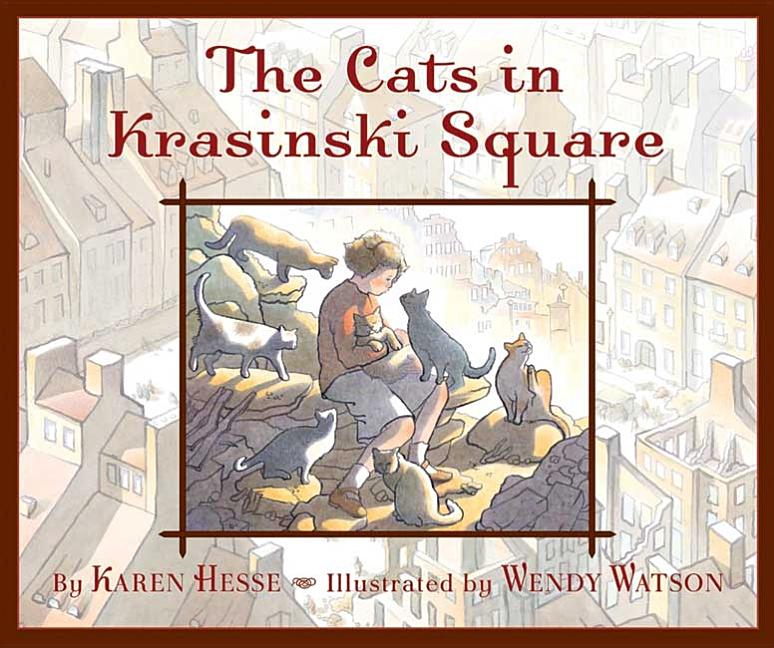Book Description
for The Cats in Krasinski Square by Karen Hesse and Wendy Watson
From Cooperative Children's Book Center (CCBC)
There is much revealed both on the surface and between the lines of Karen Hesse’s spare and moving picture book set outside the walls of the Warsaw ghetto during World War II. The young child narrator loves the cats who roam the city streets. They are a comforting reminder of what once was: “They slept on sofa cushions / and ate from crystal dishes.” Now the girl roams the streets with the cats. “I wear my Polish look, / I walk my Polish walk.” But the girl is Jewish. She escaped from the ghetto and is passing as a non-Jew. She can’t stop thinking about her friend Michal, who remains behind the wall, where people are starving. Food is scarce everywhere; one of the understated ironies is that the cats, living on mice, are better fed than the girl. The girl’s older sister is involved in a plan to sneak food through the cracks in the ghetto wall. The food will come by train, smuggled into Warsaw by brave people who are risking their lives. Then word comes that the Germans have discovered the plan and will meet the train with dogs to sniff out the smugglers. It is the small girl who comes up with the big plan that forms the dramatic climax of this remarkable story. The tale can work as an introduction to the Holocaust, but also allows for deeper reading—making the connections between the lines—for those who bring some prior knowledge of the tragedy of that time. An author’s note and an historical note provide brief information for readers needing to know more about the context and details of the story. Wendy Watson’s pencil, ink, and watercolor illustrations reflect the muted tone of the story. (Ages 7–10)
CCBC Choices 2005 . © Cooperative Children's Book Center, Univ. of Wisconsin - Madison, 2005. Used with permission.


